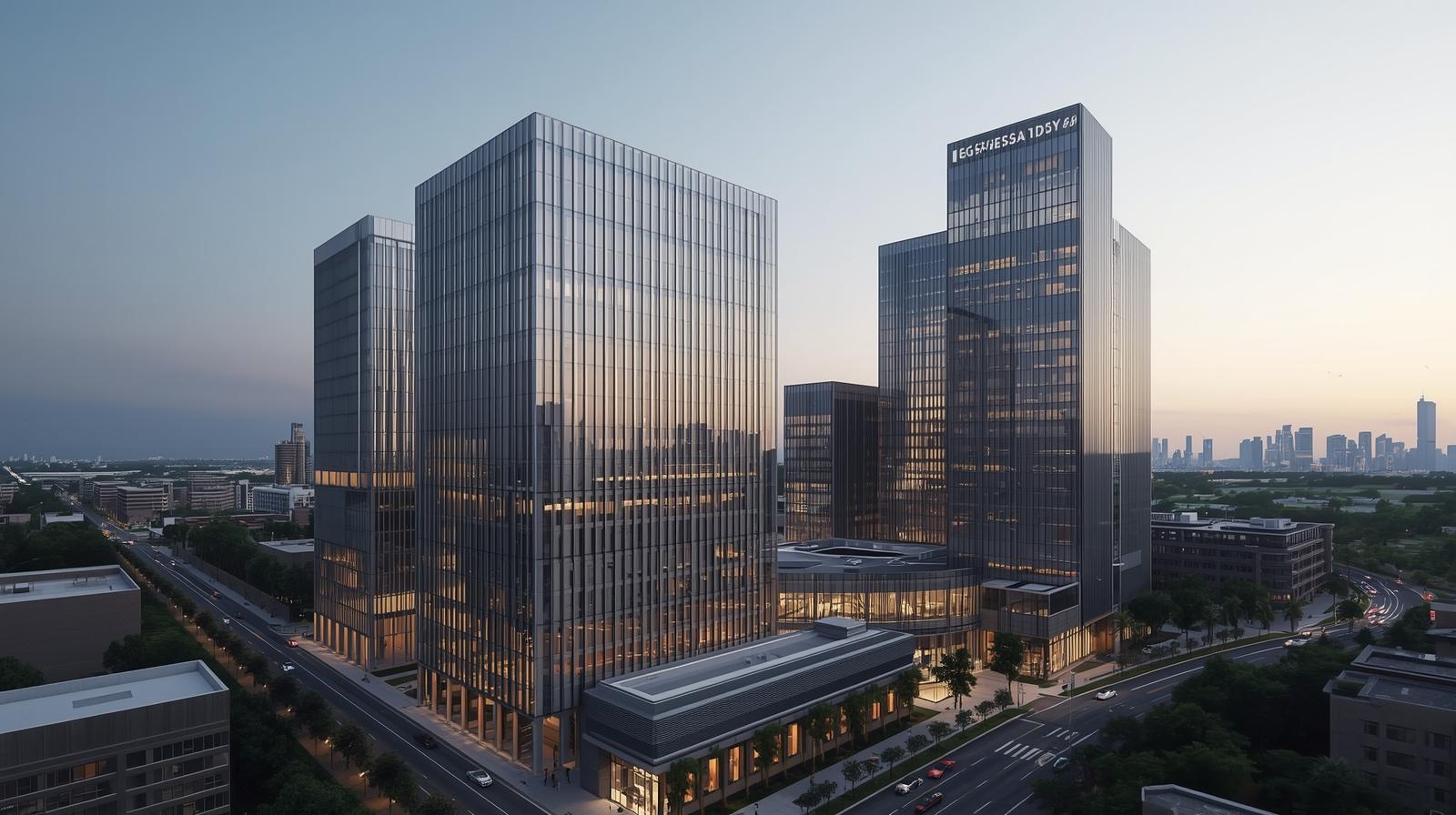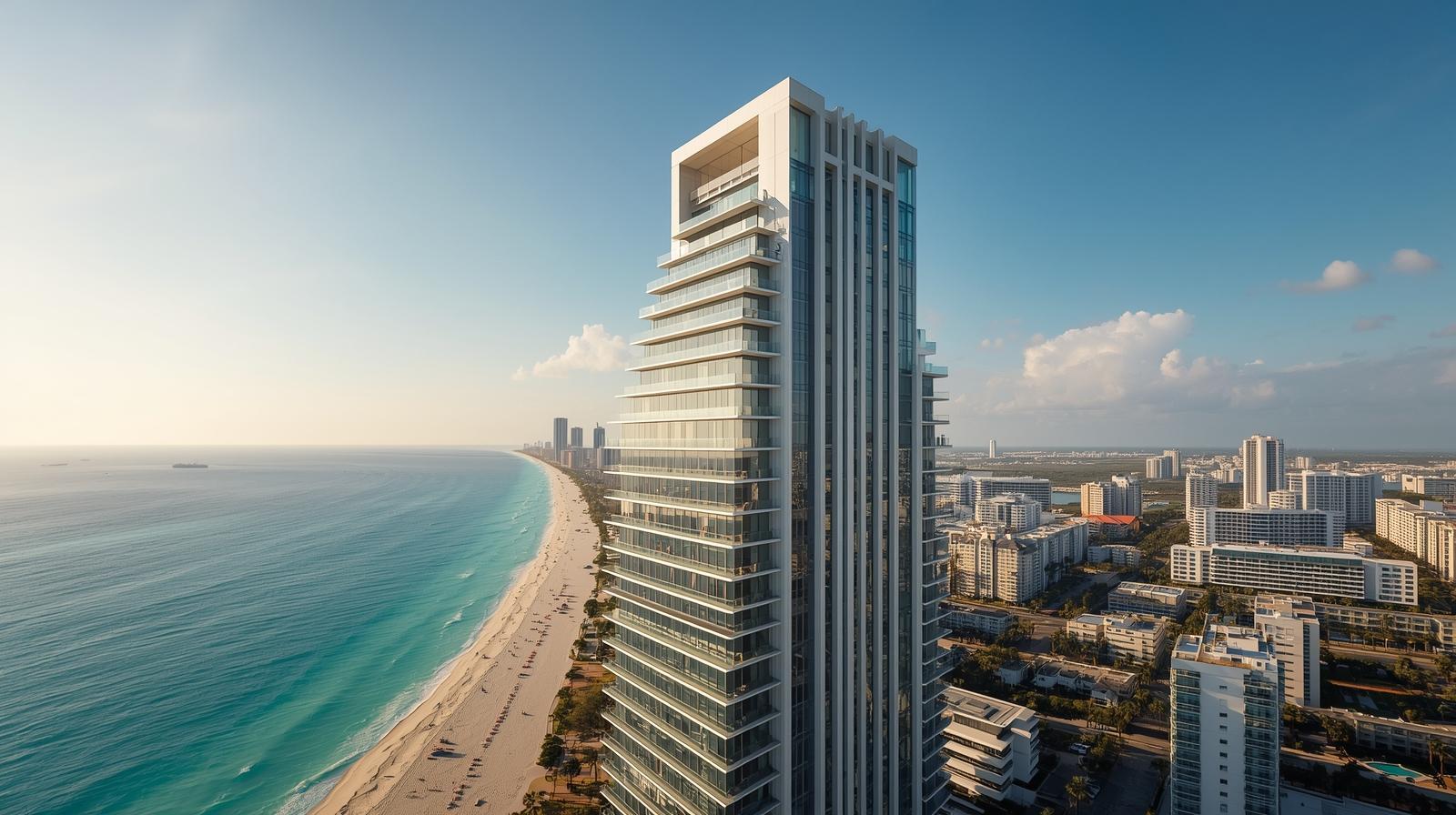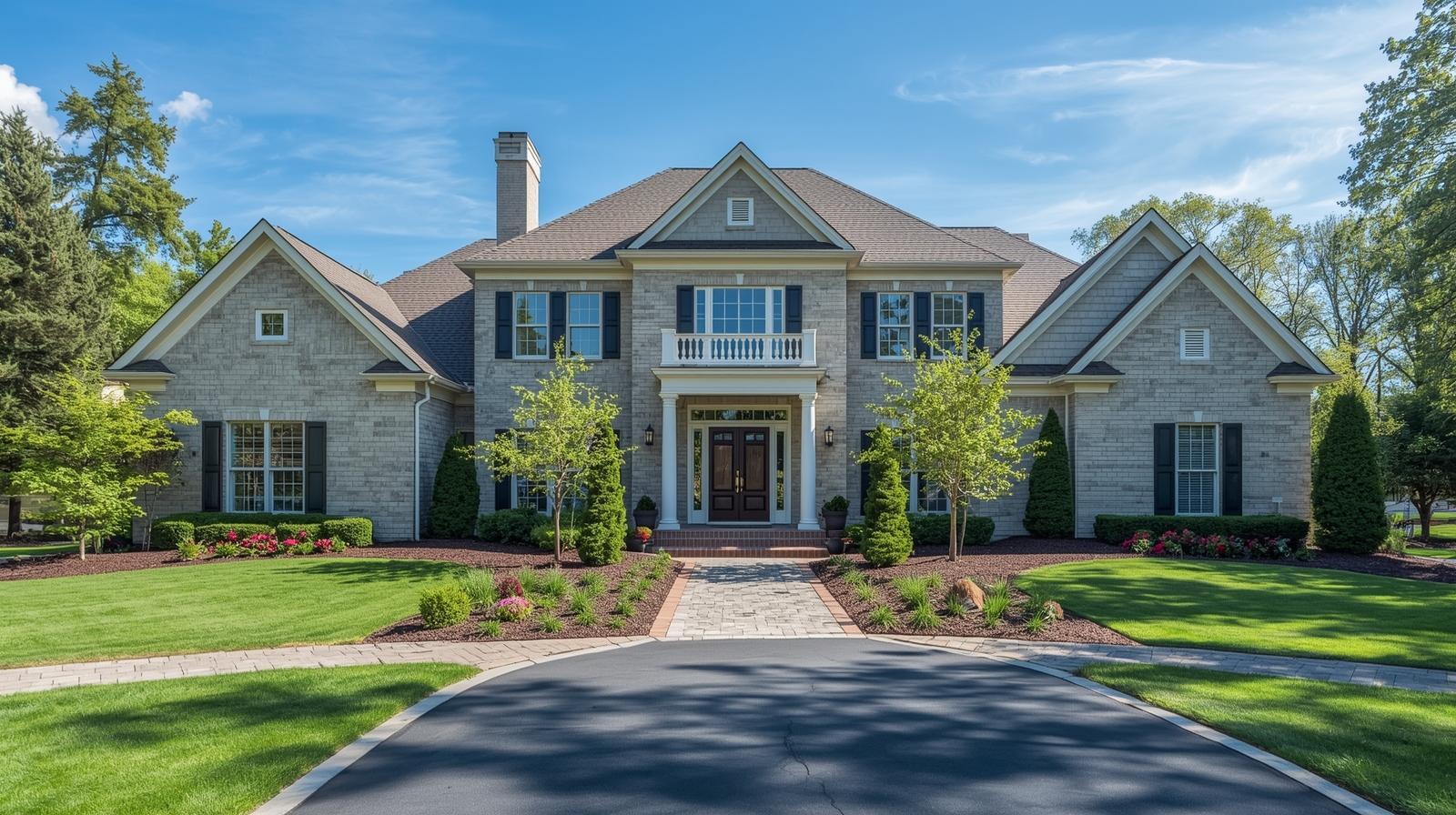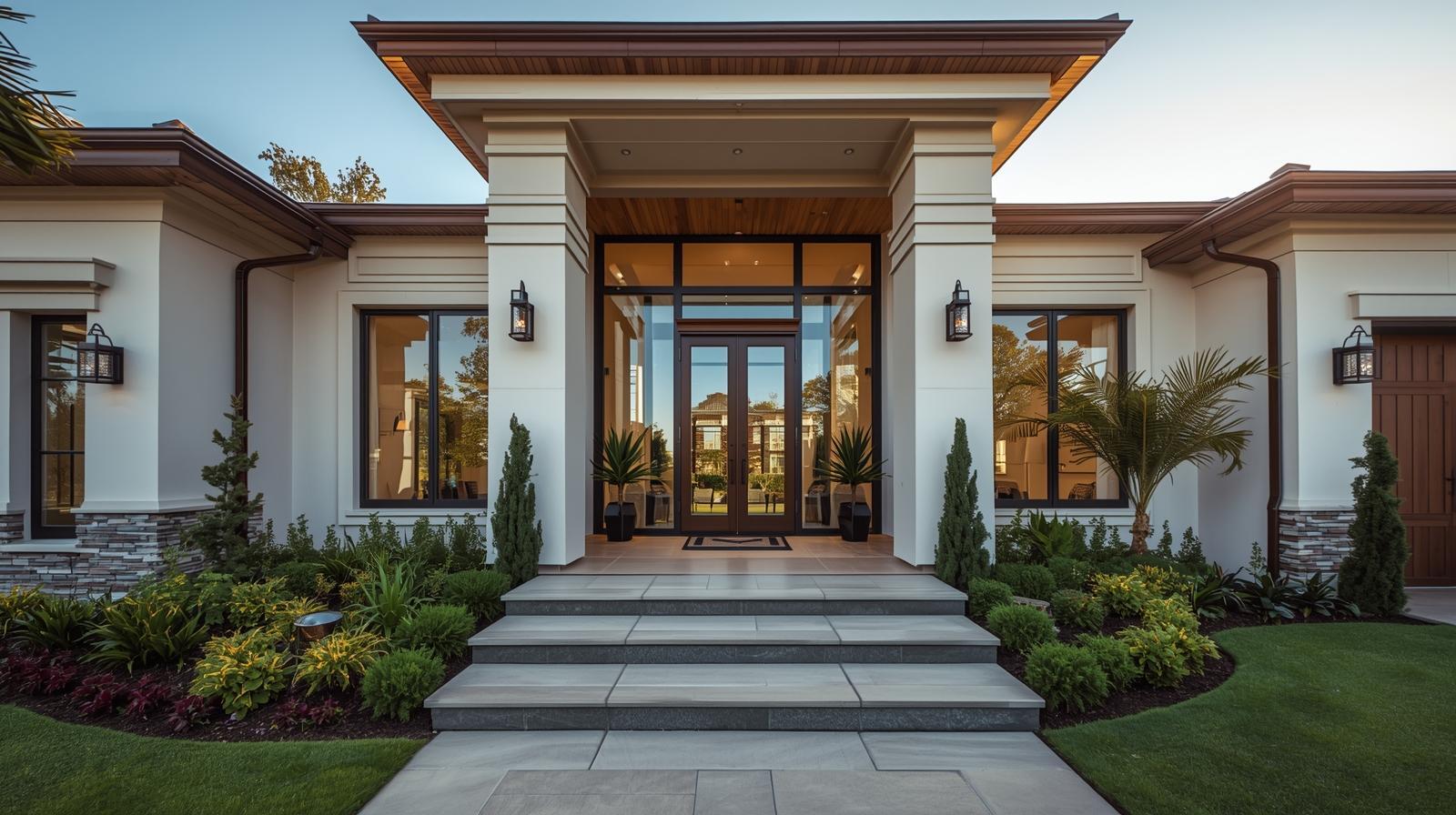While the Multiple Listing Service (MLS) seems to capture all properties on the market, many are sold off-market, also known as pocket listings.Finding these properties can be beneficial for buyers and investors.Effective methods include networking with real estate agents and other industry professionals, who may have access to off-market deals.Additionally, contacting agents in specific areas and asking about available off-market listings can be productive.
Key Strategies for Finding Off-Market Properties:
- 1. Network with Real Estate Professionals:Build relationships with agents and other professionals who can share information about off-market deals.
- 2. Contact Agents in Specific Areas:Reach out to agents working in your desired locations and inquire about potential off-market listings.
- 3. Utilize Your Network:Inform your contacts about your interest in off-market properties, as word-of-mouth can be a powerful tool.
- 4. Consider Investor-Friendly Agents:Some agents specialize in working with investors and may have access to a broader range of listings, including those off-market.
- 5. Explore Real Estate Wholesalers:Wholesalers purchase properties with the intention of assigning the contract to another buyer, often for a lower price.
- 6. Meet with Contractors:Contractors may hear about properties being considered for sale before they are formally listed.
- 7. Partner with Title Companies:Title companies handle the paperwork for property transactions and may have insight into upcoming deals.
- 8. Spread the Word:Inform anyone you know who might have relevant information, such as people who know real estate agents or other investors.
- 9. Explore Real Estate Auctions:Auctions can offer off-market deals, as properties are often sold “as-is” with no guarantees.
Direct Mail Marketing
Direct mail marketing is a proven strategy for real estate investors to find off-market deals. It involves sending targeted mail, like postcards or letters, to homeowners expressing interest in buying their property. This approach can motivate sellers to consider selling even if they hadn’t previously thought about it.
Here’s how it works:
- 1. Define your target audience:Identify the type of homeowner you want to target, such as those in a specific neighborhood, age group, or with certain property types (e.g., fixer-uppers, probate properties).
- 2. Create compelling marketing materials:Design postcards or letters that are visually appealing and clearly express your interest in purchasing their home.
- 3. Targeted mailing:Send your materials to your defined target audience.
- 4. Follow up:After sending your initial mailings, follow up with phone calls or other forms of communication to gauge interest and potentially move forward with a deal.
By using direct mail marketing, real estate investors can find properties that may not be listed on the open market, potentially leading to lucrative deals.
Online Resources
While Zillow and Trulia primarily show MLS listings, they can be used to find off-market deals, such as those listed before the MLS. To do this, regularly track the sites for properties listed 30 days before they hit the MLS. Additionally, watch for listings nearing expiration, as owners might be more open to direct negotiations.
Here’s a more detailed explanation:
- Early MLS Listing:Zillow allows sellers to list properties 30 days before they appear on the MLS.This gives investors a head start in finding potential deals before they become widely known.
- Listing Expiration:Properties that are not selling may be more willing to negotiate directly with a buyer if the listing is about to expire.This can be an opportunity to find a deal.
- Monitoring and Alerts:Roofstock suggests setting up alerts and filters on online sites like Zillow and Trulia to be notified when listings that meet specific criteria appear.
- Other Off-Market Deals:While Zillow and Trulia mainly focus on MLS listings, they can also help you find properties that are not listed on the MLS, such as “pocket listings” or properties sold privately.
- Networking:Connecting with real estate professionals can also provide access to off-market properties.
Networking
Networking is highly effective for real estate lead generation, including finding off-market properties, because it builds relationships that can lead to referrals and exclusive opportunities. It’s a strategy that becomes easier with practice and consistent effort, allowing agents to build a strong network and cultivate a steady stream of potential clients.
Here’s why networking is crucial for real estate agents:
- Building relationships:Networking focuses on building connections and fostering trust, which is essential for securing referrals and exclusive deals.
- Access to off-market properties:Many off-market properties are not publicly listed and are often discovered through networking with other real estate professionals, investors, and those in related fields.
- Finding unique opportunities:Networking can lead to discovering unique opportunities, like first-time homebuyer events or connecting with local business owners who can refer potential clients.
- Standing out in the market:Networking helps agents position themselves as knowledgeable and trustworthy, making them the go-to resource for real estate needs.
- Continuous lead generation:A strong network provides a consistent source of leads, as people are more likely to refer business to someone they know and trust.
Strategies for effective networking:
- Attend real estate events:These events offer opportunities to meet fellow professionals, investors, and other key players in the industry.
- Join online groups:Online platforms like LinkedIn and Meetup offer ways to connect with others who share your interests.
- Get involved in the community:Participating in local events and activities can help build connections and create a sense of familiarity.
- Partner with complementary businesses:Collaborating with professionals like mortgage brokers, home inspectors, and interior designers can expand your reach and generate referrals.
- Share valuable content:Sharing your expertise through blog posts, social media, and other platforms can establish you as a knowledgeable authority.
- Follow up consistently:Maintaining relationships and following up with leads is crucial for turning connections into clients.
Real Estate Agents
To increase your chances of finding a deal, work with a real estate agent who is knowledgeable about the specific area you want to buy in. They can often access properties that aren’t publicly listed on the Multiple Listing Service (MLS), as they may have connections with listing agents who are privy to properties that are about to hit the market or are being sold privately.
Here’s how to leverage an agent’s knowledge of off-market properties:
1. Find an Agent with Local Expertise:
- Start by identifying agents who specialize in the specific area you’re interested in buying.
- Referrals from friends, family, or previous real estate transactions can be a good starting point.
- Look for agents with experience in the type of property you’re looking for, such as condos, townhouses, or luxury homes.
2. Ask About Off-Market Listings:
- Once you’ve identified a few potential agents, reach out to them and inquire about off-market listings in your desired area.
- Don’t be afraid to ask about “coming soon” properties or “temporarily off-market” properties.
- An agent can often leverage their network with other agents to get you access to these listings.
3. Consider Other Strategies:
- Networking: Build relationships with other real estate investors, contractors, and even title companies, as they may have access to off-market deals.
- Direct Outreach: Consider driving around areas where you’d like to buy and looking for “for sale by owner” signs, or properties that appear to be in need of attention.
- Online Platforms: Explore websites and apps that specialize in off-market listings.
Why Off-Market Deals are Valuable:
- Competitive Advantage:Off-market properties can offer a competitive edge, as you’re likely to be among the first few buyers to see them.
- Potential for Lower Prices:Some off-market deals may be available at a discount compared to properties listed on the MLS.
- More Privacy:Off-market sales often involve more discreet and controlled processes, which can appeal to some buyers
Builders & Contractors
To leverage the network of contractors and tradesmen for off-market property leads, be transparent about your investment intentions and be upfront about looking for off-market properties.This approach builds trust and respect among real estate professionals. By being open and honest about your investment strategy, you can establish yourself as a credible and reliable partner in the real estate market.
Here’s why being transparent and building trust is crucial:
- Trust and Respect:Openness and honesty foster trust and respect among other real estate professionals.
- Referrals:Transparency can lead to referrals from other agents and contractors who may have leads for off-market properties.
- Legitimate Leads:Being transparent about your investment goals ensures that you’re not unintentionally misleading real estate professionals or potentially engaging in unethical practices.
- Long-term Relationships:Building a strong network based on trust and transparency can lead to long-term business relationships and opportunities.
In summary, by being transparent and open about your investment goals, you’ll be more likely to gain trust and respect, which can lead to valuable leads and long-term business relationships in the real estate market.
Wholesalers
Wholesalers are valuable to real estate investors seeking off-market properties because they specialize in real estate wholesaling, which involves finding a discounted property, securing it under contract, and then assigning that contract to a buyer for a fee. Wholesalers often find these properties outside of typical listings, allowing investors access to deals not readily available elsewhere.
Here’s a more detailed breakdown:
- Finding Discounted Properties:Wholesalers focus on identifying properties that are undervalued or distressed, often by directly contacting homeowners or through off-market strategies like driving for dollars.
- Securing the Contract:Once a suitable property is found, the wholesaler enters into a purchase agreement with the seller, securing the right to buy the property at a specific price.
- Assigning the Contract:Instead of actually buying the property, the wholesaler seeks out another investor who is willing to pay a higher price for the property, effectively assigning the contract and earning a fee for facilitating the transaction.
- Access to Off-Market Deals:Wholesalers often have networks and strategies for finding properties that aren’t publicly listed, making them a valuable resource for investors seeking less competitive deals.
Public Record
To find off-market real estate deals, real estate investors can leverage various strategies. Setting up email alerts on sites like HUD Home Store allows them to be notified of new properties before they are widely advertised. Additionally, monitoring public records for expired listings and contacting sellers directly can also lead to potential deals. Staying current on public records is crucial for identifying these opportunities.
Elaboration:
- HUD Home Store Alerts:The HUD Home Store offers an email alert system that notifies users when properties matching their criteria are listed. This can provide an early advantage in securing these properties.
- Public Record Scrutiny:Regularly reviewing public records can reveal properties that have expired listings or are not yet actively marketed.Goodegg Investments suggests contacting the property owners directly in these cases, as they may be open to a sale but haven’t actively listed the property.
- Contacting Sellers Directly:Real estate agents may have off-market listings or know of properties that haven’t been publicly advertised.Reaching out to agents or contacting homeowners directly can unearth deals before they hit the open market, as noted by Orchard Brokerage and Investopedia.
- Leveraging Public Records:County property records, assessment records, and other public lists can help identify property owners and potential leads. By staying informed about public records, investors can discover properties that are not yet listed on the market.
Real Estate Auctions
Auctions offer investors a wide selection of potentially undervalued properties, including foreclosed homes, bank-owned real estate, and other off-market opportunities. To find these properties, investors can utilize online auction platforms like Auction.com and RealtyTrac.Additionally, checking with the local courthouse or leveraging network connections can provide additional leads.
Here’s a breakdown of how to find auction properties and the types to look for:
1. Online Auction Platforms:
- Auction.com:This platform is known for its extensive inventory of foreclosure and bank-owned properties, offering a wide range of investment options.
- RealtyTrac:RealtyTrac specializes in providing comprehensive foreclosure listings and market analysis, helping investors identify potential deals.
2. Traditional Methods:
- Courthouse Checks:Reviewing property tax and foreclosure records at the local courthouse can reveal upcoming auctions.
- Networking:Connecting with other real estate investors, brokers, and local professionals can provide leads on upcoming auctions.
3. Types of Auction Properties to Look For:
- Foreclosed Homes:These are properties where the owner has defaulted on their mortgage and the bank or lender is selling the property through auction.
- Bank-Owned Real Estate:Also known as “REO,” these are properties that were foreclosed on and are now owned by the bank.
- Trustee Sales:These are auctions where a trustee (usually a court-appointed individual) is selling the property on behalf of the owner or a lien holder.
- Short Sales:In some cases, a property might be sold at auction as a short sale, where the lender agrees to accept less than the outstanding balance on the mortgage.
- Non-Bank-Owned Properties:These are properties that are not owned by a bank and are being sold through an auction process.
Driving For Dollars
Driving around neighborhoods, often referred to as “driving for dollars,” is a strategy for real estate investors to find off-market properties. The core idea is to identify properties that appear to be vacant or distressed, which are more likely to be available outside of traditional listings. Investors can look for signs like overgrown yards, scattered yard items, or boarded-up windows. Once potential leads are identified, their addresses should be documented for later follow-up.
Elaboration:
- Off-market properties:These are properties that are for sale but not actively listed on the Multiple Listing Service (MLS), where most buyers search for listings.
- Driving for Dollars:This method involves driving through targeted neighborhoods and visually scouting for properties that may be undervalued or in need of repair, says DealMachine.
- Signs of Distressed or Vacant Properties:Look for overgrown yards, unkempt landscaping, scattered yard items, boarded-up windows, peeling paint, broken gutters, and signs of general disrepair.
- Why is it effective?Off-market deals can offer less competition, more flexible negotiation opportunities, and potential for lower prices, according to Investopedia.
- Follow-up:Once properties are identified, it’s crucial to research their owners and gather information about their potential willingness to sell.
Drawbacks Of Off Market Properties
While off-market deals can offer benefits like less competition and potentially better pricing, they also present drawbacks such as limited exposure, difficulty finding the right buyer, and potential for lower offers. These deals lack the wide visibility of on-market listings, potentially leading to slower sales and challenges in accurately assessing the property’s worth.
Here’s a more detailed look at the drawbacks:
- Limited Exposure:Off-market properties aren’t advertised on public platforms like the MLS, meaning they have limited visibility to potential buyers. This can lead to a smaller pool of offers and potentially a slower sale process.
- Finding the Right Buyer:Without the broad reach of public listings, finding a qualified buyer can be more challenging. It often requires a strong network and targeted marketing efforts.
- Potential for Lower Offers:The lack of a competitive market can lead to buyers offering less than the property’s true market value, as they may assume the seller is motivated to sell quickly.
- Difficulty in Assessing Property Value:Without the competitive bidding of on-market sales, it can be harder to determine the property’s true market value.
- Increased Risk of Unqualified Buyers:Without the support of a realtor, off-market sellers may face the risk of dealing with unqualified buyers who may not be serious or have secured financing.
- Legal and Ethical Considerations:Off-market deals can be complex to navigate without a realtor’s expertise, potentially leading to oversights and non-compliance with real estate laws.
- Reduced Deal Flow:Off-market deals are often scarce compared to on-market options, requiring more time and effort to find suitable deals.
Benefits Of Selling Off Market Properties
Off-market property sales offer several advantages for buyers and sellers. Buyers, particularly investors, benefit from reduced competition and potential for better deals due to the exclusivity of off-market listings. Sellers also gain by potentially securing faster sales and enjoying more control over the sale process, including who they sell to and the terms of the agreement.
For Buyers:
- Reduced Competition:Off-market listings are not widely advertised, meaning a smaller pool of potential buyers, which reduces the risk of bidding wars.
- Potential for a Better Deal:With fewer competing buyers, there’s more room for negotiation, potentially leading to a lower purchase price.
- More Flexible Negotiations:Buyers and sellers can negotiate directly without the pressure of a traditional timeline, allowing for a more tailored agreement.
For Sellers:
- Increased Privacy:Off-market listings offer more privacy compared to publicly listed properties, as sellers control who sees the property.
- More Serious Buyers:Buyers actively seeking off-market listings are often more motivated and prepared to make an offer.
- Potential for Savings:With fewer agents involved, sellers may save on sales commissions.
- Faster Sales Process:The lack of public advertising and open houses can streamline the sales process, potentially leading to a quicker close.
- More Control:Sellers have more control over who buys the property, the terms of the sale, and when the sale closes.
Off Market Deals Vs. The MLS
While off-market deals can be attractive to real estate investors, they are becoming increasingly scarce, and investors should not solely rely on them. Valuable opportunities also exist within the Multiple Listing Service (MLS), and by building relationships with agents, investors can gain access to early showings and potentially better negotiation terms.
Here’s why investors shouldn’t ignore MLS listings:
- Scarcity of Off-Market Deals:Off-market properties are becoming harder to find, meaning investors risk missing out on potentially profitable deals by solely focusing on them.
- Value in MLS Listings:Many excellent properties are listed on the MLS, and these listings shouldn’t be automatically disregarded. There are plenty of opportunities to find investment-worthy properties.
- Benefits of Agent Relationships:Building connections with real estate agents can provide access to early showings and potentially more favorable negotiation terms, which can be advantageous in a competitive market.
- More Transparency and Openness:Working with agents can lead to a more transparent and open negotiation process, which can be beneficial for investors seeking to understand the value of a property and its potential.
MLS Statement 8.0
The NAR’s MLS Statement 8.0 Clear Cooperation Policy, enacted in 2020, mandates that real estate brokers submit all property listings to the Multiple Listing Service (MLS) within one business day of marketing them publicly. This means investors may find more properties listed on the MLS, potentially increasing the number of opportunities available for their investment portfolio.
Here’s a more detailed look:
Impact on Investors:
- Increased Market Visibility:By requiring public marketing to be reflected on the MLS, the policy aims to make more properties visible to a wider audience, including potential buyers and investors.
- More Listings to Consider:Investors may find a broader range of investment properties, potentially leading to better opportunities for acquisitions and higher returns.
- Reduced Scarcity of “Pocket Listings”:The policy aims to reduce the number of properties that are only marketed privately (i.e., “pocket listings”), making it easier for investors to find and evaluate potential investments.
- Greater Transparency:The policy promotes a more transparent and competitive market, as all properties are required to be publicly listed and made available to other real estate professionals and potential buyers, according to the National Association of REALTORS®.
How the Policy Works:
- Public Marketing Definition:Any marketing activity that is visible to the public, such as yard signs, online listings on public-facing websites, flyers, or digital communications, triggers the requirement to list the property on the MLS within one business day.
- One Business Day Rule:Once a listing is publicly marketed, the listing broker has one business day (excluding weekends) to submit the property to the MLS.
- No “Opt Out”:The policy doesn’t allow brokers to opt out of submitting listings to the MLS, according to Realtor.com.
In Conclusion:
The Clear Cooperation Policy is likely to result in a more transparent and competitive real estate market, which should benefit investors by increasing the availability of listings and making it easier to find potential investment properties.









